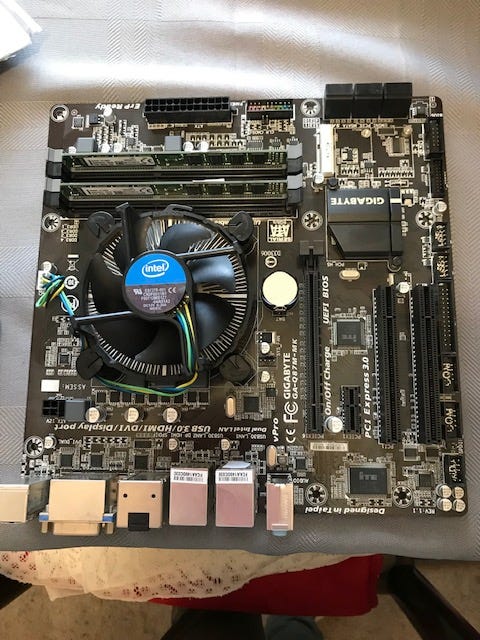A Journey Through Windows: Nostalgia from 3.1 to 10
Written on
Chapter 1: The Dawn of Windows 3.1
In order to run Windows 3.1, a system required just 1MB of RAM, marking a significant shift as it allowed MS-DOS applications to be operated with a mouse for the first time. Notably, it was also the inaugural version of Windows to be distributed on a CD-ROM.
When Windows 3.1 launched in 1992, I was 29 years old. The day it arrived at my government workplace is still vivid in my memory. I was excited by this fresh graphical user interface, while many colleagues were apprehensive about embracing the change. I could almost hear their silent concerns: “What about our trusty Function Keys?” These were the Programmable Function keys, which we relied on before transitioning to Windows!
Back then, our data entry tasks involved batching Transaction Codes and using forms, while we maintained records on microfiche. This method kept us engaged, requiring precise teamwork and constant focus.
As I became proficient with this innovative operating system, I eagerly anticipated future updates. They soon arrived in the form of Windows 95 and Windows 98, both of which I appreciated immensely.
At 32, when Windows 95 was released in 1995, I owned an IBM-compatible Pentium 200 MMX computer. This operating system introduced the iconic Start button and menu, launched with a massive marketing campaign featuring the Rolling Stones’ “Start Me Up.” It also pioneered “plug and play” functionality, allowing users to connect peripherals that were automatically recognized by the OS.
Windows 95 established a 32-bit environment and a taskbar, placing a greater emphasis on multitasking. Although MS-DOS was still essential for running certain applications, it was less central than in previous versions. The debut of Internet Explorer also occurred alongside Windows 95.
The subsequent release of Windows 98 in June 1998 expanded upon its predecessor, introducing Internet Explorer 4, Outlook Express, Windows Address Book, Microsoft Chat, and NetShow Player, later replaced by Windows Media Player 6.2 in the 1999 Second Edition.
I fondly recall using Windows Media Player; its features were a delightful addition to my computing experience.
Windows Millennium Edition marked the end of the MS-DOS-based versions, as it was the last in the Windows 9x series. Released in September 2000, Windows ME was aimed at consumers and was notoriously buggy, contrasting with Windows 2000, which targeted enterprise users.
In October 2002, a year after the release of Windows XP, I was 39 and enjoying life with a broadband connection and Windows 98. By 2018, I had upgraded to an Acer Veriton mini-computer running Windows 7, which was released in October 2009. It aimed to rectify the criticisms that Windows Vista, launched in January 2007, received, and was generally disliked by many, including myself.
Windows 8, which debuted in 2012, was faster than its predecessors and supported the newer USB 3.0 devices. Despite this, I continued to happily use Windows 7 for four years. Some users argue that Windows 7 offers better app compatibility, despite Windows 10’s additional features. However, Microsoft ceased support for Windows 7 in January 2020.
Windows 10, released in 2015, encourages users to upgrade for the latest security updates, prompting me to transition this year.
Chapter 2: Building My New Computer
My partner, affectionately dubbed “Mere Male” (inspired by a Readers Digest column), skillfully assembled a new desktop for me. I purchased a motherboard and case, while he provided a fan, hard drive, and video card, collaboratively crafting my new PC.
Here are some specifications for my new setup:
- VSK1055 case
- I5–4590 processor
- 8GB RAM
- 240GB SSD
- Windows 10 Pro
Support for Windows 7 and 8.1 ended on January 10, 2020. Consequently, users can no longer seek assistance from Microsoft or software publishers for issues encountered on earlier versions if those applications are designed for Windows 10.
While some programs might still run on older systems, they may experience glitches that won’t be resolved without the necessary updates for Windows 10.
Now, I’m thrilled to be able to use virtual backgrounds online. My upgraded computer boasts a more powerful processor, essential for my coaching business. However, I will always have a soft spot for the functionality of Windows 7. With ongoing security updates, it would have sufficed for my needs!

The first video titled Relaxing With Windows 3.1 offers a nostalgic glimpse into the early days of this operating system, highlighting its charming features and quirks.
The second video titled A Nostalgic Christmas 2017: Corner Packard Bell Windows 3.1 Install showcases the installation experience of Windows 3.1, evoking memories of simpler computing times.
References for this article are derived from the following source:
From Windows 1 to Windows 10: 29 years of Windows evolution
Microsoft Windows has seen nine major versions since its first release in 1985. Over 29 years later, Windows looks very…
www.theguardian.com